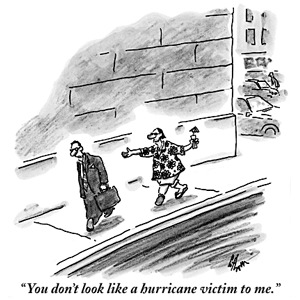Jean-Luc Godard, the 79-year-old director of movies like “Breathless” and “Alphaville,” has come to the support of James Climent, a photographer who faces a fine of 20,000 euros ($26,520) for violating musical copyrights.
Mr. Climent, who lives in Barjac, a picturesque old town of artists and organic farmers in the Gard region of southern France, wants to take his case to the European Court of Human Rights in Strasbourg. The highest French court rejected his last appeal in June, siding with music royalty collection agencies that brought the complaints against Mr. Climent five years ago.
Mr. Climent said Mr. Godard this month donated 1,000 euros to his fund, helping him get him more than halfway toward the 5,000 euros he needs for legal fees and other costs of taking his case to the European Court.
While Mr. Godard’s views on intellectual property are widely shared on the libertarian fringes of the Internet, they might seem surprising coming from a director who, under French law, retains editorial control over his work and derives financial benefit from it.
Yet Mr. Godard, a pioneer of the New Wave of French cinema in the 1960s, whose films skewered the conventions of bourgeois society, clearly still delights in provoking the establishment, even if it could cost him money.
Mr. Godard’s support for Mr. Climent comes as the debate over file-sharing is growing ever more politically charged in France.
Mr. Climent was convicted under longstanding copyright legislation. But now the authorities are ready to begin enforcement of a tough new law, under which the Internet connections of persistent pirates could be suspended.
“Downloading is a citizen’s right,” Mr. Climent said. “Even if there is only a small chance, there is a chance that a favorable judgment could change the laws across Europe.”
Mr. Godard has yet to comment publicly on Mr. Climent’s case, but he laid out the rationale for his opposition to French copyright rules in a recent interview with the cultural magazine Les Inrockuptibles, in which he declared, “There is no such thing as intellectual property.”
“Copyright really isn’t feasible,” Mr. Godard said. “An author has no rights. I have no rights. I have only duties.”
Mr. Godard could not be reached, but an associate, who insisted on anonymity because the director had not authorized him to speak, confirmed the donation. Mr. Godard, the associate said, wanted to make a “symbolic” gesture to draw attention to what he described as Mr. Climent’s plight.
In addition to the money, Mr. Climent said he had received a handwritten note that included a picture of a model sailboat and the valediction, “Surcouf, Jean-Luc Godard” — referring to Robert Surcouf, a maritime pirate of the French Revolutionary era.
Mr. Godard’s support for Mr. Climent reflects some unusual twists in the debate over piracy in France, where digital sales of media content from authorized, licensed services have been far slower to take hold than in the United States.
The conservative government of President Nicolas Sarkozy has championed tough measures to strengthen intellectual property enforcement. His efforts have been fiercely resisted by the opposition Socialists, which poses a bit of a paradox since they are traditionally the party with closer links to the cultural establishment.
The centerpiece of Mr. Sarkozy’s crackdown on piracy is the so-called graduated response law, under which people who share digital songs, films or other media content could face the suspension of their Internet connections if they ignore repeated warnings to quit.
The first e-mailed warnings will be sent to people accused of piracy within days, according to the government agency set up to administer the law.
It could be many months, however, until the government’s resolve to disconnect people from the Internet is actually tested; more than a year can pass before people accused sharing files will receive their final warning, notifying them that they may be taken to court.
To have a chance of a hearing at the high court in Strasbourg, Mr. Climent must file suit there by the end of the year. European high court cases can drag on for years.
Nicolas Gallon, Mr. Climent’s lawyer, acknowledged that Mr. Climent’s chances of victory were slim, given the series of judgments against him in France.
“In all honesty, it will be very difficult,” said Mr. Gallon, who has previously represented other counterculture figures, like the French anti-globalization campaigner José Bové. “We are not very optimistic. But we have to take this debate as far as we can.”



 Academics fear that government cuts may force poorer students to abandon the arts for vocational courses. Photograph: Paul Barton/Corbis
Academics fear that government cuts may force poorer students to abandon the arts for vocational courses. Photograph: Paul Barton/Corbis
